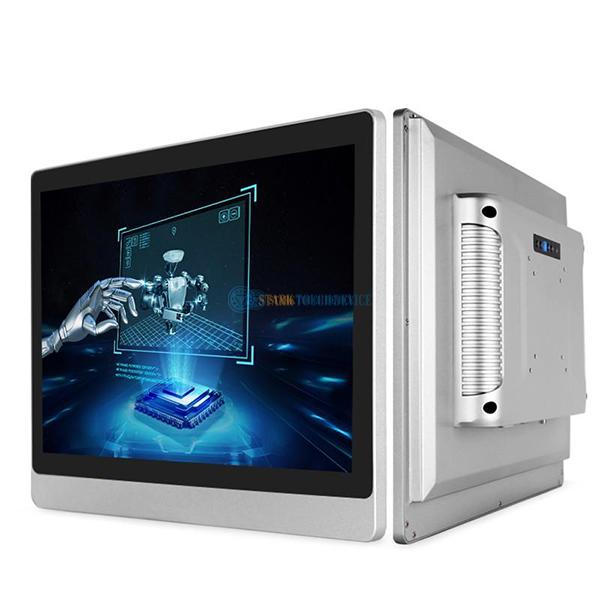Welcome STARK TOUCH DEVICE!
Solutions
Steps for troubleshooting industrial control computer networks
Step-by-Step Network Troubleshooting for Industrial Control Computers
Industrial control computers (ICCs) rely on robust networks to coordinate machinery, sensors, and supervisory systems. When connectivity fails, production lines halt, safety systems malfunction, or data logging stops. Unlike consumer networks, industrial environments demand fault tolerance against electromagnetic interference, harsh temperatures, and real-time latency constraints. This guide outlines systematic steps to diagnose and resolve network issues in industrial settings.

Initial Assessment and Symptom Isolation
Before diving into technical checks, gather contextual information to narrow the problem’s scope.
Gather Operational Context
Affected Devices: Identify which ICCs, PLCs, or sensors are offline. A packaging line ICC losing connectivity to three adjacent sensors suggests a localized switch issue, while a factory-wide outage points to core infrastructure.
Error Messages: Check ICC logs for warnings like “TCP timeout” or “MAC address conflict.” A pharmaceutical plant ICC logged “CRC errors” on a specific port, hinting at cable degradation.
Time of Failure: Correlate outages with events like power surges, equipment startups, or maintenance work. A textile mill’s network crashed 10 minutes after a motor was switched on, indicating electromagnetic interference.
Verify Physical Connections
Cable Integrity: Inspect cables for damage, especially in areas exposed to vibrations or chemicals. A food processing plant’s network recovered after replacing a gouged Ethernet cable near a conveyor belt.
Connector Tightness: Ensure RJ45, fiber, or DIN connectors are fully seated. Loose connectors caused intermittent drops in an automotive assembly ICC’s connection to a robotic arm.
Power Status: Confirm network devices (switches, routers) have stable power. A UPS failure during a shift change left a power plant’s SCADA system offline for 45 minutes.
Layered Network Diagnostics
Industrial networks often use multi-layer architectures (physical, data link, network, transport). Isolate issues by testing each layer sequentially.
Physical Layer Checks
Link Lights: Verify green/amber LEDs on ICC NICs and switches. No lights on a steel mill ICC’s port indicated a failed transceiver.
Cable Testing: Use a cable tester to check for opens, shorts, or miswires. A 100m run between a CNC machine ICC and switch showed continuity but failed gigabit speed tests due to a single broken twist in the pair.
EMI Shielding: In noisy environments (near VFDs or welders), use shielded cables and grounded conduits. A printing press ICC’s network stabilized after replacing unshielded cables with STP (shielded twisted pair).
Data Link Layer Verification
MAC Address Table: Log into switches to check if ICC MAC addresses appear in the forwarding table. A missing entry suggested a duplicate IP or ARP poisoning attack in a chemical plant’s network.
VLAN Configuration: Ensure ICCs are in the correct VLAN. A misconfigured VLAN tag isolated a water treatment plant’s ICC from its HMI, causing alarms to go unanswered.
Duplex/Speed Mismatch: Force ICC NICs and switch ports to the same speed (e.g., 1000Mbps) and duplex (full). Auto-negotiation failures caused 30% packet loss in a paper mill’s network.
Network and Transport Layer Analysis
Ping Tests: From the ICC, ping default gateways, DNS servers, and critical devices. A petrochemical plant’s ICC couldn’t ping its gateway, revealing a misrouted static IP.
Traceroute: Identify where packets drop. Traceroute showed a hop timing out at a firewall, indicating a rule blocking industrial protocols like Modbus TCP.
Port Blocking: Verify firewalls allow industrial ports (e.g., 502 for Modbus, 2222 for Profinet). A factory’s security update accidentally blocked UDP port 161 (SNMP), disabling remote monitoring.
Advanced Troubleshooting Techniques
When basic checks fail, deeper analysis is required.
Packet Capture and Analysis
Wireshark: Capture traffic at ICCs or switches to inspect protocol headers. A pharmaceutical ICC’s Modbus TCP packets showed incorrect function codes due to a firmware bug.
Flow Analysis: Use network monitoring tools to identify traffic spikes. A sudden surge in broadcast packets overloaded a switch, causing latency in a robotics ICC’s motion control.
Firmware and Configuration Reviews
Switch Firmware: Outdated firmware may lack industrial protocols. A manufacturing plant’s switch firmware update added support for EtherCAT, resolving communication issues with new motors.
ICC Network Settings: Check for static IP conflicts or incorrect subnet masks. Two ICCs with the same IP caused intermittent drops in a packaging line’s network.
Redundancy Testing
Ring Topologies: For industrial Ethernet rings (e.g., PRP, HSR), simulate link failures to test automatic recovery. A power grid’s network failed to reroute during a fiber cut, revealing misconfigured ring parameters.
Dual-NIC ICCs: Verify failover between NICs. A dual-homed ICC in a refinery didn’t switch to the backup link after the primary cable was cut due to a disabled “NIC teaming” feature.
Environmental and Hardware Inspections
Industrial settings expose networks to unique stressors.
Temperature and Humidity
Device Placement: Ensure switches and routers aren’t in hot enclosures. A switch in a 50°C (122°F) control room overheated, causing random reboots.
Condensation: Check for moisture in outdoor cabinets. A water treatment plant’s network recovered after sealing a switch enclosure against humidity.
Vibration and Mechanical Stress
Mounting Stability: Secure switches and ICCs with anti-vibration mounts. Vibrations from a forging press loosened a switch’s power connector, causing intermittent power loss.
Cable Routing: Avoid running cables parallel to high-voltage lines. A 480V cable induced noise in a nearby Ethernet run, corrupting sensor data.
By methodically testing each network layer, verifying configurations, and inspecting environmental factors, technicians can resolve industrial control computer network issues efficiently. The key is to prioritize checks based on symptom severity and environmental context, minimizing downtime in critical automation systems.


